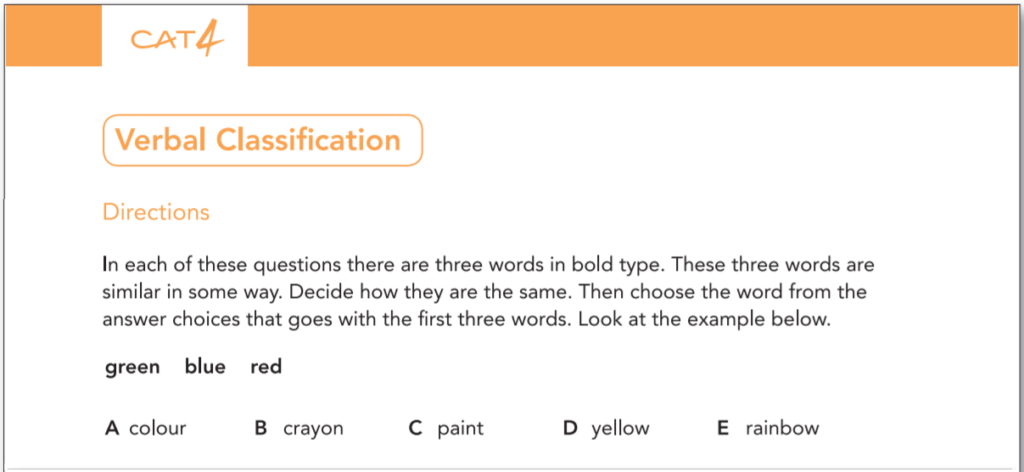One of the key components of the Cognitive Abilities Test Fourth Edition (CAT4) exam is the Verbal Classification section. This sub test assesses a student’s ability to identify relationships between words and categorize them accordingly. In this article, we will delve into the Verbal Classification section of the CAT4 exam, providing you with a thorough understanding of what it entails, how to prepare for it, and tips to excel.
Understanding Verbal Classification in the CAT4 Exam
What is Verbal Classification?
Verbal classification involves identifying similarities among words or letters to pick the odd one out. It’s a key logical reasoning skill that is evaluated in many competitive exams to determine if the test taker has the ability to learn effectively. Verbal Classification is a critical part of the CAT4 exam and helps to ascertain a child’s ability to absorb verbal patterns and information; a skill that will be used across topics. Questions present students with a set of words and requires them to identify the one which does not belong with the others. The task involves recognizing patterns, understanding relationships, and applying logical reasoning to determine the correct classification.
Why is Verbal Classification Important?
Verbal Classification isn’t just about vocabulary but rather its about how a student thinks critically and analytically in a “verbal” context. These skills are good indicators for future success in a variety of subjects, including language, science, and social studies. Students can enhance their problem-solving abilities, improve their reading comprehension, and develop a deeper understanding of language structure by developing their verbal classification skills.
Structure of the Verbal Classification Section
Types of Questions
- Synonym and Antonym Relationships: Identifying words that are synonyms or antonyms of each other.
- Category Membership: Recognizing words that belong to a specific category.
- Part-to-Whole Relationships: Understanding how a part relates to the whole.
- Degree of Intensity: Identifying words that represent different levels of intensity or magnitude.
To better understand the types of questions here are a few examples:
Verbal Classification Synonym and Antonym Relationships Question
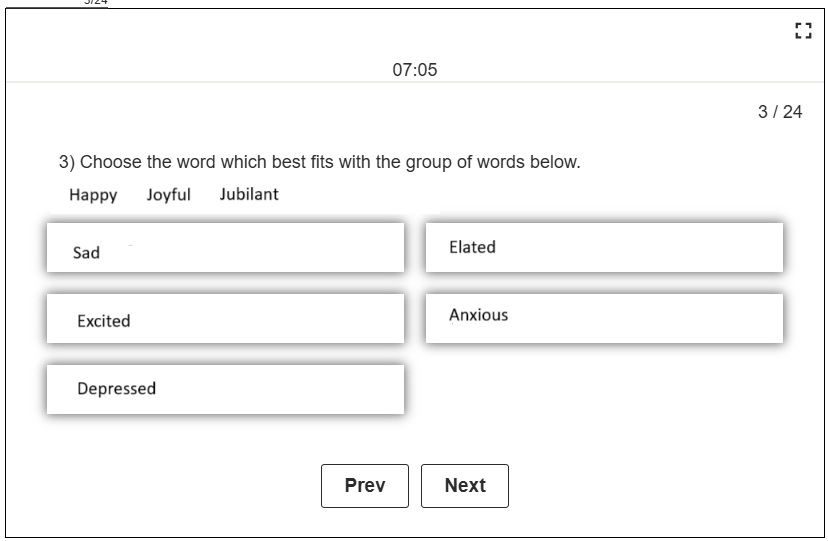
Verbal Classification Category Membership Question
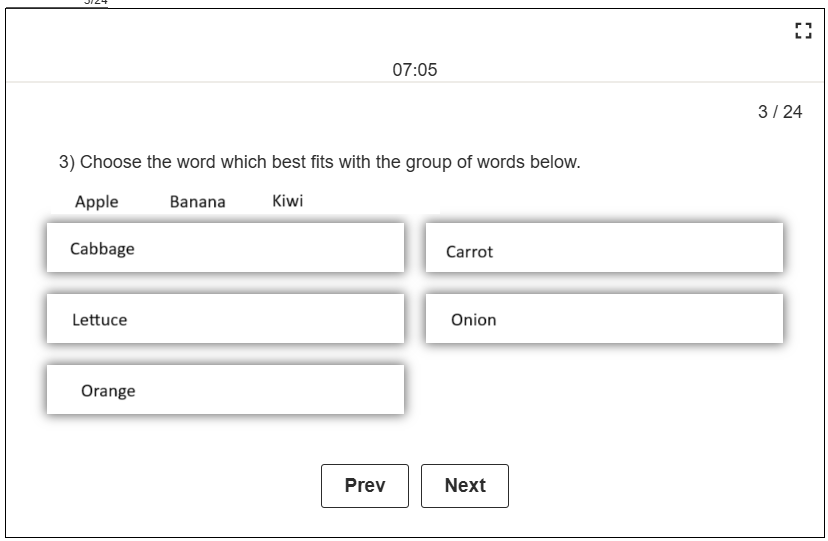
Verbal Classification Part-to-Whole Relationships Question
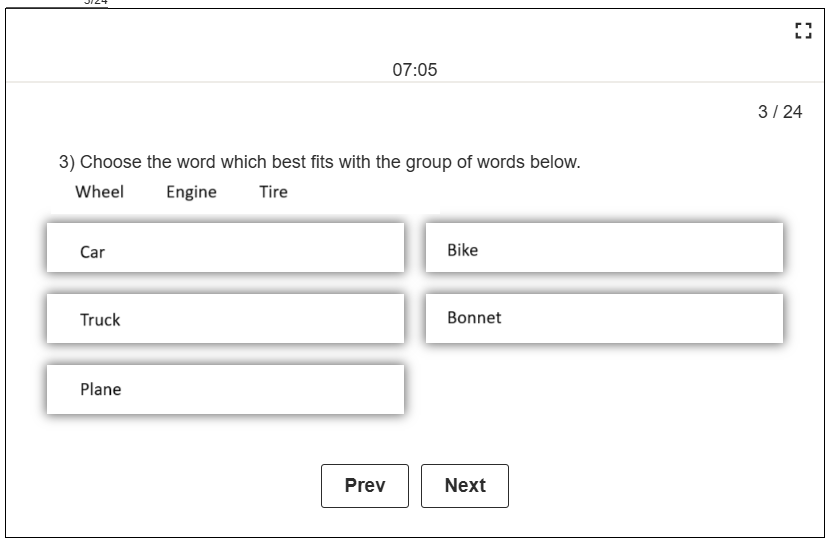
Verbal Classification Degree of Intensity Question:
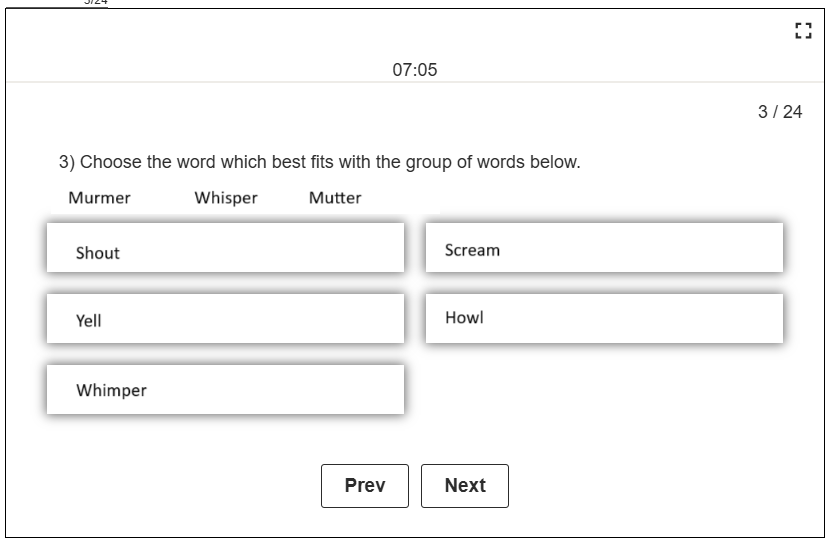
How to Prepare for the Verbal Classification Section
Build a Strong Vocabulary
Vocabulary is the foundation of success in the Verbal Classification section and developing one takes time so make sure to start early through consistent, regular practice:
- Read Widely: Engage with a variety of texts, including books, articles, and essays. Pay attention to new words and their meanings.
- Use Flashcards: Create flashcards with new words and their definitions. Review them regularly to reinforce your memory.
- Practice Word Games: Play word games like Scrabble, Boggle, or crossword puzzles to enhance your word recognition and understanding.
Understand Word Relationships
To do really well in Verbal Classification, you need to appreciate the different types of word relationships there are and how to use different strategies to help you:
- Study Synonyms and Antonyms: Familiarize yourself with common synonyms and antonyms. This will help you identify words that are similar or opposite in meaning.
- Learn Categories: Understand the categories that words belong to, such as animals, fruits, vehicles, etc. This will help you recognize words that do not fit within a specific category.
- Analyze Part-to-Whole Relationships: Practice identifying how parts relate to the whole. For example, understand that a “wheel” is part of a “car.”
Practice with Sample Questions
Regular practice is essential and using sample questions and past papers to familiarize yourself with the format and types of questions you may encounter is key. Here are some tips for effective practice:
- Time Yourself: Simulate exam conditions by timing yourself as you practice. This will help you manage your time effectively during the actual exam.
- Review Mistakes: After completing practice questions, review your mistakes to understand where you went wrong. This will help you avoid similar errors in the future.
- Seek Feedback: If possible, get feedback from on your performance. You will glean valuable insights and tips for improvement during this step.
Develop Critical Thinking Skills
Verbal Classification requires more than just vocabular; it requires critical thinking and analytical skills. To develop these skills:
- Engage in Discussions: Participate in discussions and debates to enhance your ability to think critically and articulate your thoughts.
- Solve Puzzles: Engage in puzzles and brain teasers that require logical reasoning and problem-solving.
- Reflect on Your Thinking: After solving a problem, reflect on your thought process. Consider alternative approaches and evaluate their effectiveness.
Tips for Excelling in the Verbal Classification Section
Read the Questions Carefully
One of the most common mistakes students make is misreading the questions. Take your time to read each question carefully and understand what is being asked. Pay attention to keywords and instructions to ensure you are answering the question correctly.
Eliminate Incorrect Options
If you are unsure of the correct answer, use the process of elimination to narrow down your options. Eliminate the words that clearly do not belong and focus on the remaining choices. This strategy can increase your chances of selecting the correct answer.
Look for Patterns
Verbal Classification questions often involve patterns or relationships between words. Look for common themes, such as synonyms, antonyms, categories, or part-to-whole relationships. Identifying these patterns can help you determine the word that does not belong.
Stay Calm and Focused
The CAT4 exam can be challenging, but it’s important to stay calm and focused. If you encounter a difficult question, take a deep breath and approach it methodically. Remember that it’s okay to skip a question and come back to it later if needed.
Practice Regularly
Consistent practice is essential for success in the Verbal Classification section. Set aside time each day to practice sample questions and review your progress. The more you practice, the more confident and prepared you will feel on exam day.
Conclusion
The Verbal Classification section of the CAT4 exam is a critical component that assesses a student’s verbal reasoning skills. By understanding the structure of the section, building a strong vocabulary, and practicing regularly, students can enhance their performance and achieve success. Remember to approach each question methodically, look for patterns, and stay calm under pressure. With the right preparation and mindset, you can excel in the Verbal Classification section and unlock your full potential in the CAT4 exam.
If you haven’t already, read my story by clicking here on how I helped my son pass with flying colours.
Explanations on the other sub-tests that are part of the CAT4 assessment can be found at the links below:



